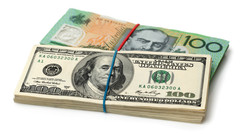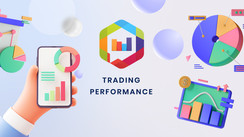The Ease of Getting Started with Forex Day Trading
For the aspiring traders among you, it may be reassuring to know that stepping into the world of forex (foreign exchange) day trading can be impressively simple. This market is known for its exceptional accessibility, far surpassing that of other financial markets. Thanks to the plethora of forex brokers out there, novices can get their foot in the door without facing substantial financial hurdles. These brokers often have low thresholds for initial deposits, and some even waive this requirement altogether.
However, while the path to forex day trading may seem clear and uncomplicated, it's crucial not to be led astray by this apparent simplicity. The success of your trading journey will largely depend on the thought and planning that goes into determining your trading capital. Many factors come into play here, and overlooking them could spell the difference between success and failure.
Important Considerations for Forex Day Trading Success
If you aspire to become a successful forex day trader, you need to cultivate the ability to accurately predict price movements. You could technically start your journey with as little as $100, but this might not be enough to bring about substantial profits. A common piece of advice among seasoned traders is never to risk more than 1% of your account balance on a single trade.
In the world of forex trading, using a stop-loss order is a fundamental tactic to protect against sizeable losses. This comes into play if the base currency moves in the opposite direction of your predictions. It is a type of order placed with a broker to buy or sell once the stock reaches a certain price, helping limit potential losses.
Defining Minimum Capital for Forex Day Trading
If you're itching to get started right away, an initial sum of $100 could technically suffice. But to broaden your horizon of potential profits, you might want to consider starting with $500. For the best possible outcome, an investment of $5,000 is ideal as it provides the potential for a consistent income commensurate with the time and effort put into trading.
It's crucial to remember that forex trading comes with inherent risks, and you should approach it with a well-thought-out strategy to mitigate these risks. Always ensure that your trading capital aligns with what you can afford to lose.
Understanding Trading Risks
Embarking on your forex day trading journey implies understanding and accepting certain inherent risks associated with this financial market. It's a realm where currencies' prices fluctuate constantly due to a myriad of factors, such as economic data releases, geopolitical events, or even market sentiment. Essentially, you're speculating on these price changes, and the majority of the risk comes from these prices moving against your predictions.
Each trade you place carries with it a certain level of risk - from the initial opening to the eventual closing. This risk, also known as trade risk, is calculated by the difference between your entry price (the price at which you buy or sell a currency pair) and the stop-loss order price (the price level at which your trade will automatically close, if the market goes against your prediction), multiplied by the position size and the pip value.
Additionally, leverage, often used in forex trading, can significantly amplify your profits but also your losses. This tool allows you to control large amounts of money using very little of your own and borrowing the rest. For example, with a leverage of 100:1, you control $100,000 with only $1,000. While this means that you can potentially make significant profits from small market movements, your losses can also be magnified if the market doesn't move in the direction you predicted. Therefore, it's critical to use leverage wisely and consider it as part of your risk management strategy.
Risk Management in Day Trading
Leverage can be a tempting proposition, given its potential to maximize your trading profits. However, it's important to understand that the associated risks can be just as significant. The best way to navigate these risks is to avoid excessive leverage.
Even the most successful traders will experience losses from time to time; it's an inevitable part of the trading world. Therefore, managing the risk associated with each trade is vital to protect your capital from substantial depletion during a losing streak. One way to do this is by adhering to the 1% rule mentioned earlier.
Understanding Lot Sizes and Pip Values in Forex Trading
When you delve deeper into forex trading, you'll come across terms such as "lot sizes" and "pip values." These are fundamental concepts in the forex market and understanding them is crucial to effective trading.
In forex trading, a "lot" refers to a standardized quantity of the currency you're trading. It's the term used to describe the trade size or the number of currency units you're buying or selling. There are several lot sizes: a standard lot (100,000 units), a mini lot (10,000 units), and a micro lot (1,000 units).
Choosing your lot size directly influences the risk you're taking. Larger lots increase the potential for greater profits but also for greater losses. Therefore, understanding your risk tolerance and managing your lot size can be a crucial aspect of your trading strategy.
On the other hand, a "pip" (short for Point in Percentage) represents the smallest price change a currency pair can make. Most major currency pairs are priced to four decimal places, and a pip is one unit of the second decimal point (0.01). However, there are exceptions like Japanese yen pairs, which are quoted to two decimal places.
The "pip value" helps traders to calculate their profit or loss for each movement. The pip value is calculated by multiplying one pip (0.0001) by the specific lot size. For example, for a standard lot, the pip value is $10 (0.0001 x 100,000 units).
The relationship between lot sizes and pip values is essential because it helps traders manage their risk. A larger lot size increases the value of each pip, and consequently, the risk and potential reward. A clear understanding of these concepts can help traders optimize their trading strategies and manage their capital more effectively.
Determining Your Trading Capital
As a prospective day trader in the forex market, one of the most pivotal decisions you'll make revolves around your trading capital. The amount of money you decide to start trading with can play a significant role in your trading journey's overall success and longevity.
When you're just getting started, you may be tempted to jump right in with minimum capital. While you can technically start trading forex with as little as $100, this small amount will greatly limit your potential returns. For instance, a forex broker may allow you to open an account with a minimum initial deposit, but remember that this should be money you can afford to lose. It’s advisable to begin trading with a more substantial amount, such as $5,000, which could provide a reasonable income that compensates for the time you invest in trading.
Your trading capital should align with your financial goals, risk tolerance, and life circumstances. You should avoid trading with money you can't afford to lose or funds earmarked for essential expenses like rent or food. Be realistic about your financial situation and never borrow money to use as trading capital.
You also need to consider the implications of forex trading's inherent risk. Even with the most sophisticated strategies and robust risk management, forex trading involves risk. No trader wins 100% of their trades; losses are an inevitable part of trading. This is why you must never risk more than you're comfortable losing on any single trade. A general rule of thumb often used in the trading community is to never risk more than 1% of your account balance on a single trade.
Considering this, if you start with a $1,000 account, the most you should risk on any one trade is $10. Similarly, with a $10,000 account, you should never risk more than $100 per trade. By sticking to this rule, you can ensure that even a string of losses won't significantly deplete your trading capital.
Determining your trading capital isn't a one-time decision. As you grow and evolve as a trader, your capital requirements might change. You might decide to reinvest profits back into your trading or adjust your capital based on changes in your financial situation or trading strategy.
In conclusion, determining your trading capital involves a careful evaluation of your financial situation, trading goals, and risk tolerance. It's about striking a balance between having enough capital to make meaningful profits while also ensuring that you aren't risking more than you can afford to lose.
Conclusion
Forex trading is a complex and dynamic field that often brings up numerous questions, especially for newcomers. Here, we will delve deeper into some commonly asked queries to shed more light on key aspects of forex trading.
How much time should I dedicate to forex trading daily to make profits?
The amount of time one needs to dedicate to forex trading to turn a profit varies significantly and depends largely on your trading strategy, experience, and the market conditions on a given day. However, the general consensus is that effective forex trading is more about the quality of trades than the quantity.
Some traders may find success in trading for just a couple of hours each day, focusing on the most volatile times of the market to maximize potential profits. However, this doesn't account for the time spent outside active trading. Preparing for the trading day by researching market trends, reviewing previous trades, and planning future ones is a critical part of a trader's routine and can take several additional hours.
It's important to remember that successful trading isn't simply about clocking hours. It's about creating and sticking to a robust trading plan, staying informed about market trends, and continuously learning and adapting.
What is the daily trading volume of the forex market?
The forex market is renowned for its sheer size and liquidity. With over $6 trillion traded daily across various currency pairs globally, it's the largest financial market in the world. This vast trading volume is distributed among currencies worldwide, not confined to the U.S. dollar alone. The market's enormous size offers high liquidity, meaning traders can buy and sell currencies with minimal price slippage.
Is day trading forex a better choice than trading stocks?
The choice between forex and stock trading depends on an individual trader's preference, strategy, and financial goals. Both markets have their unique advantages and challenges. For instance, the forex market offers high liquidity, 24-hour trading, and the ability to start trading with less capital. On the other hand, the stock market might offer greater potential for certain types of strategies based on company-specific news and analysis.
The 'Pattern Day Trading Rule,' which applies to stock trading in the U.S. and requires a minimum of $25,000 in your account, can be a barrier for some traders. This requirement doesn't apply to the forex market, making it more accessible for traders with smaller accounts.
It's advisable for traders to explore both markets, learn their characteristics, and decide which better suits their trading style and objectives. Remember, there's no universal "best" choice – what matters is finding the right fit for your individual needs and circumstances.
By asking questions, learning, and seeking out information, you equip yourself with the knowledge needed to navigate the dynamic world of forex trading. Always remember that education is a trader's most valuable tool.





